A Guide to Cabin Plans

Cabins are an excellent option for a vacation home or even year-round. Their simple, rustic style is ideal for a family that enjoys the outdoors. Are you looking for a ski cabin or cabin by the beach? You can choose from numerous cabin house plans online.
You’ve always thought of building a cabin, but you don’t know where to start. You may need some more information before beginning your project. Simple cabin plans are easy enough to build on your own. Use this guide to find all the information about efficient house plans before you look at cabin designs.
Standard Features of Cabin Plans
When we imagine cabins, most of us picture the traditional log cabin. But there are many different types of cabin plans and features to choose from, such as:
- Contemporary vs. Traditional: What kind of look do you want for your log cabin? Do you want a classic log cabin, or are you looking for a more modern style? You can choose from various options to find a cabin plan that fits whatever style you want.
- Small vs. Large: If your cabin is hosting many people, you may want to opt for a larger cabin house plan. What if you don’t have as many people to accommodate, and you want that cozy cabin feel? You can choose from a selection of small cabin plans as well.
Here are some of the standard features of cabins:
- Woodsy aesthetic: A cabin is only an authentic cabin if it’s in a rural area. Design your living space to complement the outdoor theme around you. You need to use wood or stone to construct and decorate your cabin.

- Porch and deck: Access to nature is a major draw of a cabin. Some cabin plans feature porches and decks to capitalize on indoor-outdoor living space. You could even have the master bedroom open up to the back porch for easy access and a beautiful view of the sunrise.
- Balcony: For a second-floor view of your property, you can have a balcony coming off the master bedroom. You can roll out of bed and enjoy a hot cup of coffee right outside your bedroom.
- Fireplace: You can put a stone furnace in the living room for a place to relax. A cabin fireplace provides warmth and comfort for your outdoorsy home.
- Minimal decorations: Cabins differ from lodges in their design. While lodges feature high ceilings and large windows, cabins have more simple decor. Their minimal design results in easy installation and cost-effective material.
- Gable or cross-gable roofs: A gable roof has a triangular design with two symmetrical sides. This shape allows snow to slide off the roof to prevent collapse.
- Open layout: An open floor plan gives you flexible living space for you and your family. You can have a smooth transition from the kitchen to the dining area to the living area. With an open layout, you can keep an eye on the whole family at once.
- Option for more than one floor: You could add a second floor to your cabin as a separate living area for your family members. Creating a cabin with a second floor is also an excellent option if you plan on renting out your property during the year.
5 Benefits of Cabin Plans
Log cabins are beneficial for your physical and mental health. Here are five health benefits of living in a cabin:
Advocates an active lifestyle for you and your family: Log cabins exist in the woods, on a mountain or by a lake. You can be more physically fit by taking nature trails and enjoying the beautiful scenery around you. Instead of watching TV, take advantage of the outdoor activities in your location. You can go skiing or sledding in the snow, or you can go swimming in the lake during the summer. You’ll have such breathtaking views around you that you’ll want to spend more time outside.
Improves the air quality of your home: Log cabins made of wood have natural air-purifying features. Trees store carbon, and wooden logs can control the amount of humidity in your home. The regulation of moisture and carbon provides better air circulation throughout the log cabin. With this air circulation system, you won’t need to use a dehumidifier or an air filter. The wood panels on your walls create healthier air for you to breathe. You can breathe clean air, reducing your risk of respiratory illnesses. The people in your family who have allergies will also enjoy breathing in the fresh air in your cabin.
Provides natural insulation: Wood is a naturally energy-efficient material. The natural insulation of wood offers a more comfortable temperature in your home. In the harsh, cold winter, wood cabins can keep you and your family warm. Because wood prevents heat loss, wood panels can help you regulate your body temperature. Having a stable body temperature has positive effects on your body. The wood panels can also keep hot, humid air out of your living space during the summer. With this natural insulation, you can save money on your energy bills each month.
Encourages a mentally healthy atmosphere: Log cabins are popular accommodations for when you go on vacation. They provide a peaceful environment that has positive effects on your mental health. As a natural material, wood has a calming and pleasing effect on the design of a room. If you live in a log cabin, you may have less of a chance of developing anxiety or depression. Log cabins can also reduce your risk of stress-related illnesses, such as digestion issues. Living in a log cabin can lower your stress levels, making your property a great vacation destination.
Promotes an eco-friendly living space: Wood is a natural material. The wood panels in your log cabin provide an ecological atmosphere for your home. Wood is a renewable resource, unlike brick or stone, and has less of an impact on the environment. As noted above, wood can provide better air quality. Homeowners who live in green cabins have better moods and better health. The eco-friendliness of log cabins may improve your mental and physical health.
Choosing the Right Cabin For Your Family
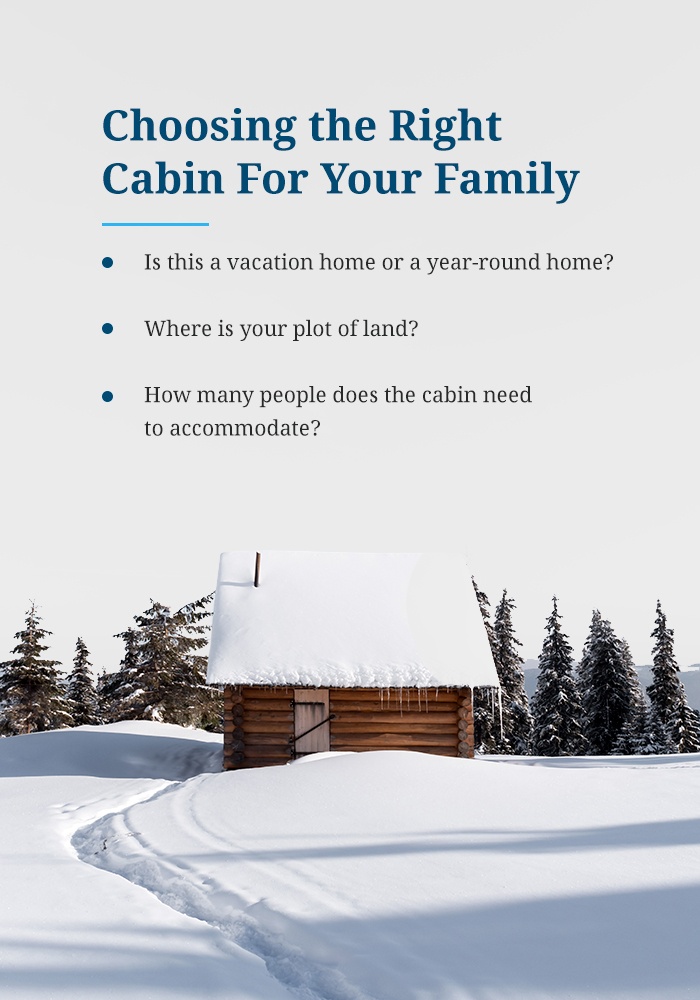
Cabin house plans come in all shapes and sizes, depending on what features you want to have in your cabin. As you decide which cabin plan is right for you and your family, consider these factors:
- Is this a vacation home or a year-round home? Do you want to have your cabin as a vacation home, or do you want to live in it all year long? How often and when you will be using your property will help you decide on what features you need in a cabin house.
- Where is your plot of land? Will your cabin be in the mountains or by the beach? Determine what plan works for the specific terrain and surroundings of your property.
- How many people does the cabin need to accommodate? Are you looking for a small cabin plan or a mid-size to large cabin plan that can fit a larger family? Will two-bedroom cabin plans be enough space for your family, or do you need more rooms?
You can buy a standard floor plan, or you can customize the floor plan to accommodate your family’s needs. For inspiration for your cabin design, here are three examples of cabin-style house plans:
1. Small Cabin Floor Plans
You can choose from as small as one-bedroom cabin plans. If you have a limited amount of land on your property, you can build a small cabin that provides plenty of space for you. A small cabin gives you a unique space for a tiny home or a guest house. A 384-square-foot house is enough space for a couple to enjoy a cozy weekend together. This little cabin has an open floor layout, with a combined kitchen and living area. The bathroom connects to the bedroom, so you can get yourself ready for bed with ease.
2. Cabin Plans With a Loft
Cabin designs with two stories provide you with plenty of space to spread out and have privacy. Modern cabin plans include a loft that overlooks the first floor. A second-floor loft serves as a bonus room that your family can use for hanging out or for playing games. On the second floor, if the bedrooms empty into the loft, you can use it as a meeting area. In featured cabin-style house plans with two levels, you have more space. You can put your bonus rooms downstairs and all the bedrooms upstairs. You could also have a guest bedroom on the first floor so your family can have privacy.
3. Three-Bedroom Cabin Plans
If you have older children, you can have your master bedroom on the first floor and put the kids’ bedrooms upstairs. You can find plenty of three-bedroom efficient house plans that work for you and your family. Three-bedroom cabins are available with simple cabin plans. A contemporary style house plan includes a playroom for your kids and guests to enjoy. You can create a cabin that gives each bedroom a bathroom, so you don’t have to wait for the bathroom in the morning. Add a fourth bedroom for your guests to use when they stop by for the day.
Cabin Plans FAQ
After learning this information, you may still have doubts about building a cabin. Here are the answers to some frequently asked questions:
1. What Makes a Cabin a Cabin?

The term “cabin” refers to a small house made out of wood that exists in a rural area. Rustic cabin plans involve thick logs and simple design. Traditionally, the person who builds a cabin is the one who lives in it. These days, you can hire a professional builder to put a cabin on your property, but the materials are simple enough for you to build your dwelling on your own. You can make a cabin either as a vacation home or a permanent residence all year long. A cabin house needs the proper building permits to ensure you can live in it all year long.
2. What Materials Should You Use to Build a Cabin?
The typical material for a cabin is wood. The type of wood you use depends on the availability in your area. Certain types of wood are more resistant to moisture. You can also create an accent with stones or brick with more rustic cabin plans. Besides materials, you also need posts, paints and nails. Wood posts sink into the ground to provide more of a foundation. They make the cabin more efficient to install. You can paint or stain wood, so you can use whatever paint you want. Hammer the nails into each wood panel to have sturdy walls.
3. Do Cabins Need Foundations?
Like houses, cabins need foundations to transfer the weight into the earth. You can choose the foundation type that works for your living space. A concrete slab foundation for a cabin takes the least amount of time. This time savings reduces the labor costs you’ll need to invest. Choose a frost-resistant slab if your cabin will be in a cold climate. A pier slab foundation elevates the cabin above the ground. This type of foundation allows access to plumbing and electrical systems. The wooden panels keeping up the house can suffer from moisture damage if you don’t maintain them. A cabin held up by a crawl space gives you enough space for an HVAC system and plumbing. Check the crawl space for mold and mildew that could damage your foundation. A basement foundation provides extra storage space or additional living space. This foundation is the most expensive, so make sure you have room in the budget for it.
4. How Long Do Wood Cabins Last?
A wood cabin can last a lifetime or longer if you build yours the right way. Extreme weather conditions and improper installation can decrease the life of the cabin. The type of wood you use will determine how long your cabin lasts. Certain types of wood withstand extreme temperatures better. If your climate gets snow or heavy rain, you should use composite wood that is more durable. Composite wood is natural wood with plastic fibers mixed into it. Wooden cabins are also sensitive to insect damage. You can prolong the life of your wood cabin by inspecting it at least once a year.
Search Cabin Plans With Us at Family Home Plans

At Family Home Plans, we offer several benefits to our customers, including:
- Fast turnarounds:We know the process of building a new home can be a long one, and we want to save you as much time as possible. When you pick one of our house plans, the plan will get to you in a matter of days. If you choose to work with an architect, you will likely wait months before receiving your blueprints.
- Huge selection of home plans: Select one of our thousands of house plans. We will also change any of our drawings to accommodate your family’s exact requirements.
- Cost savings: Working with us will save you thousands of dollars, as architects can be very expensive. Since you can customize any of our house plans, you can accommodate your budget.
- Price match guarantee:We will also save you money by beating any competitor’s price on one of our plans by 5% of the total cost. We honor our price matching guarantee up to four weeks after your order. You can feel good about buying from us.
You can browse our selection of home plans today to find the cabin plan that will complement your property.

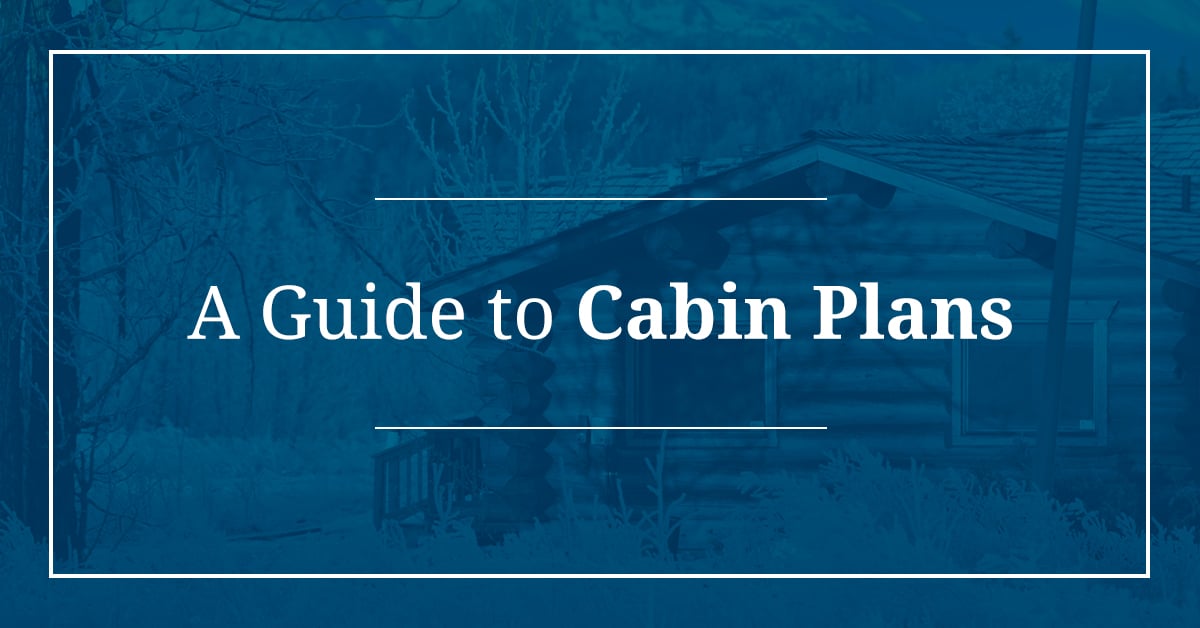
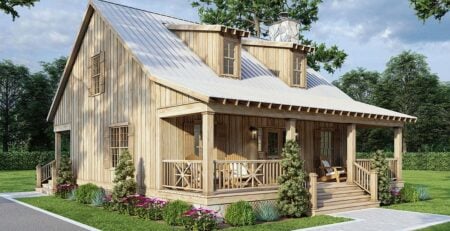

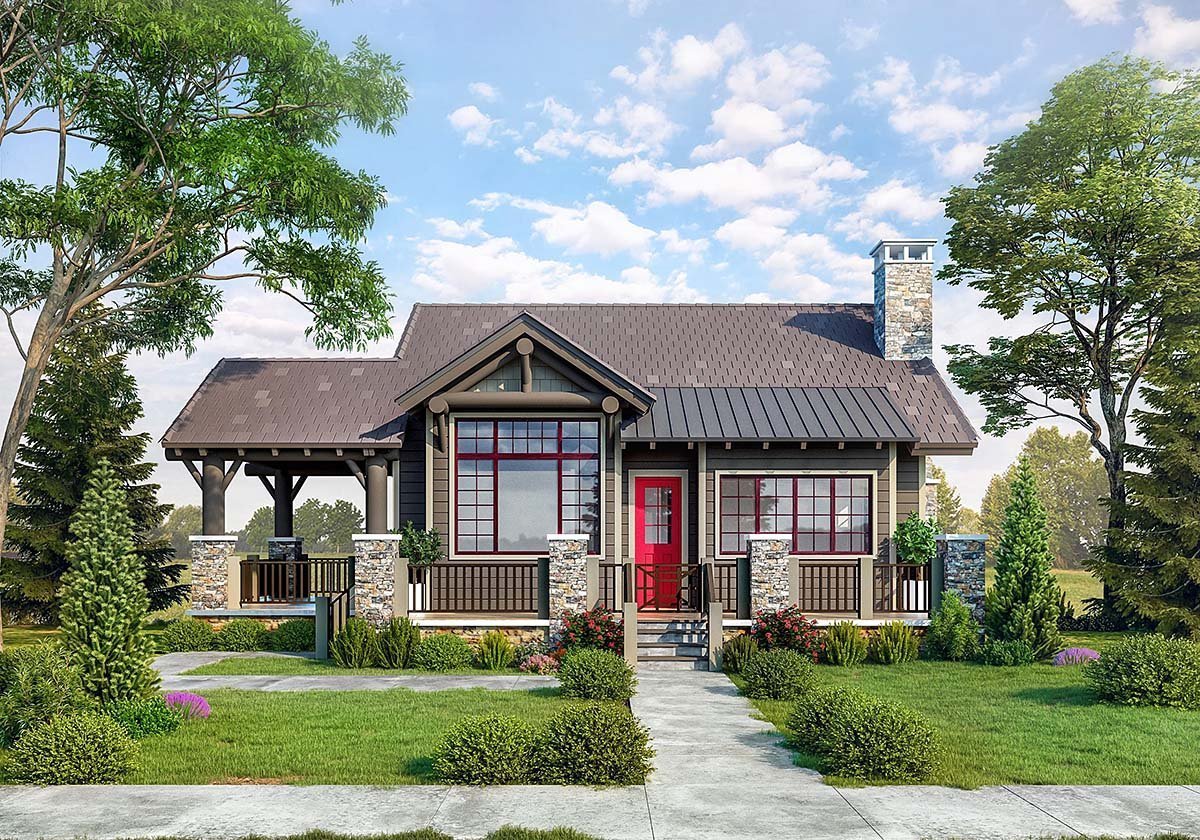
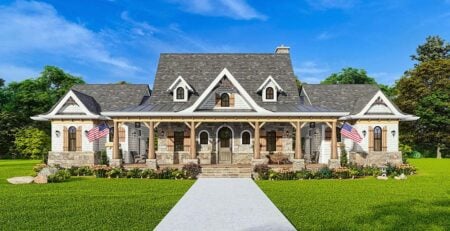

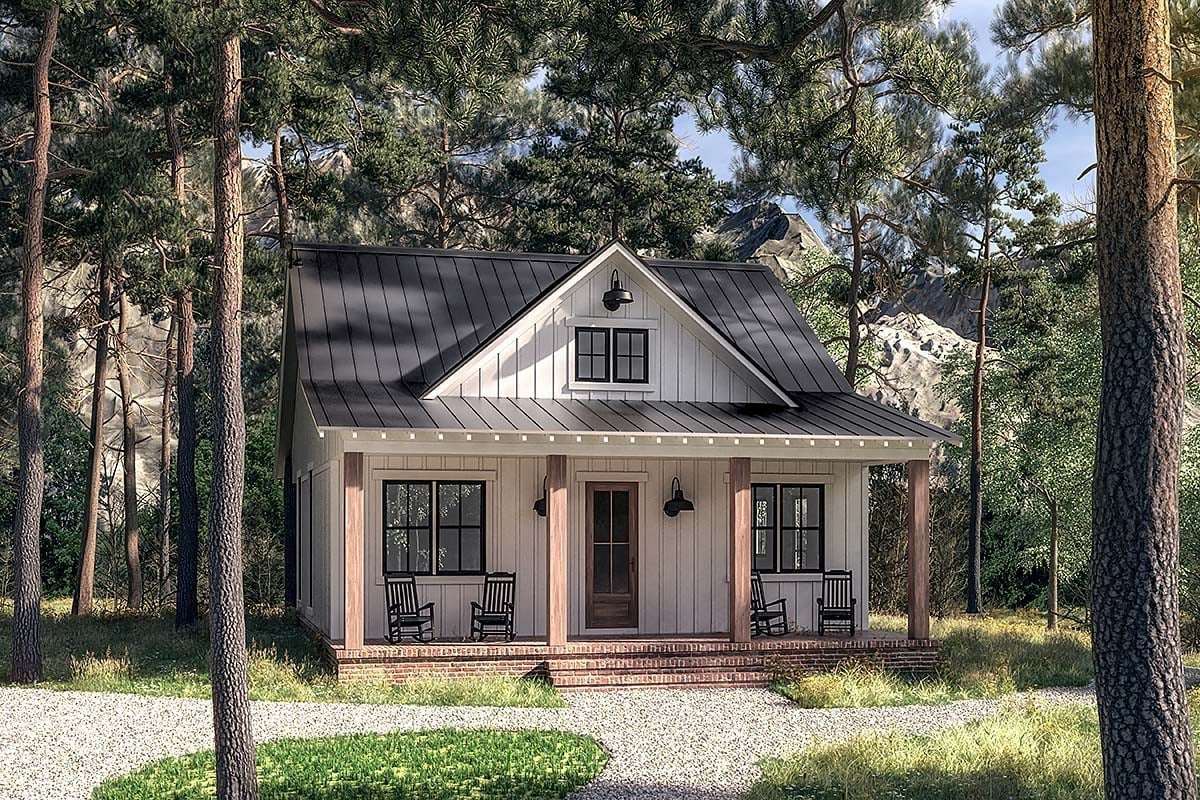
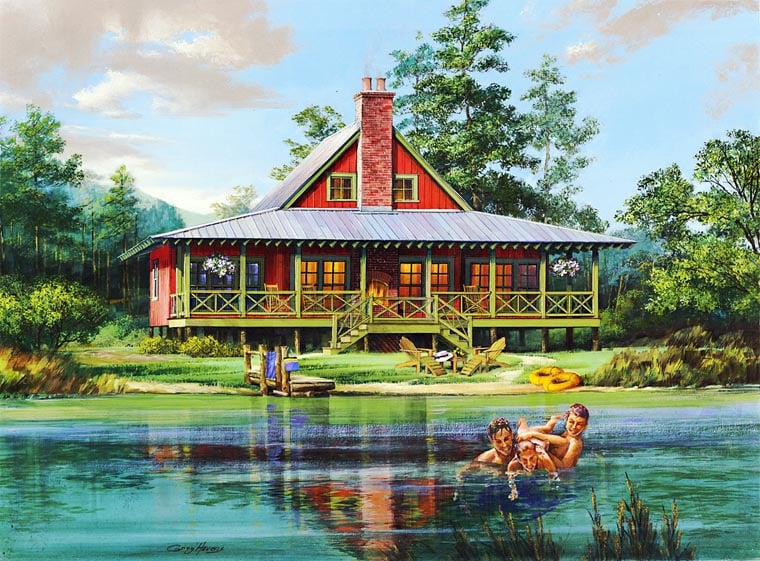
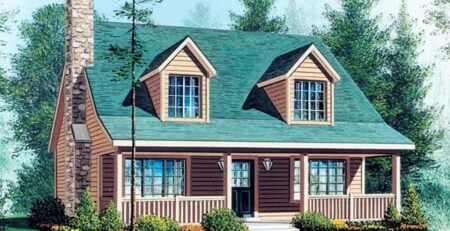
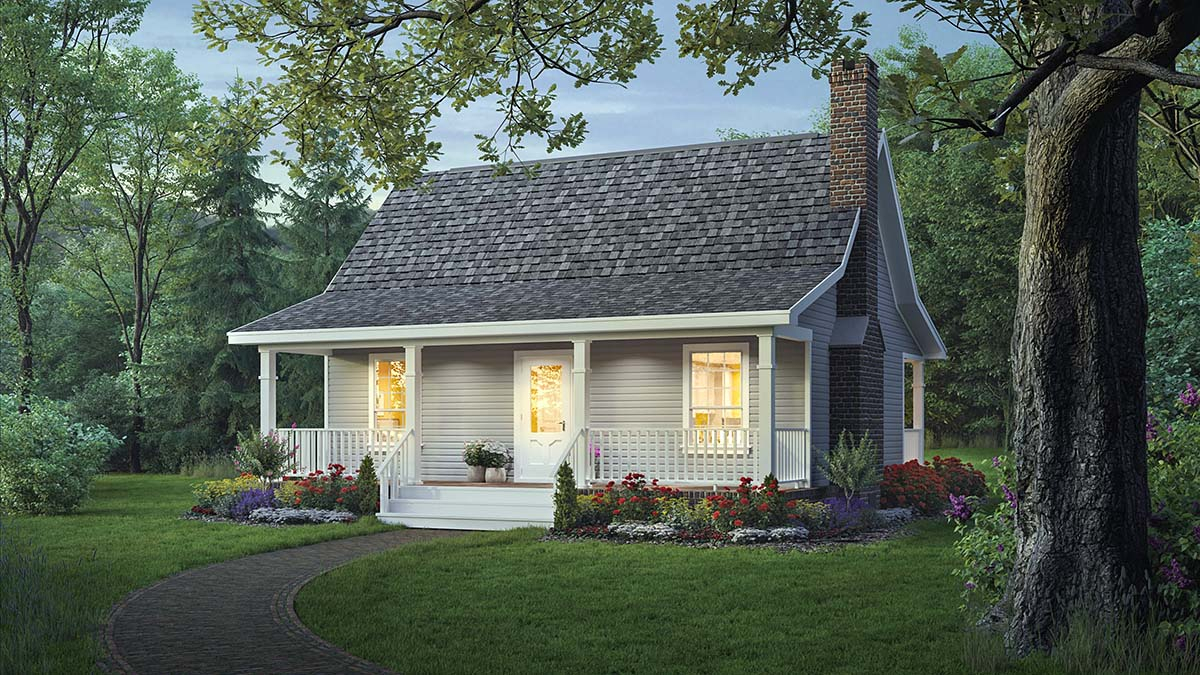
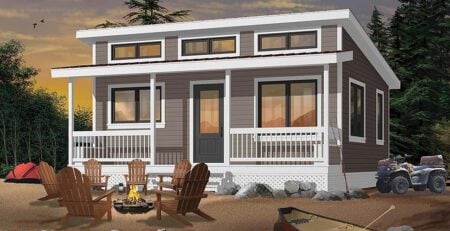

Comment (1)
[…] dimensions are 35′ wide by 36′ deep. Choose wooden siding in brown to give this cabin a traditional aesthetic. The wide, welcoming front covered porch measures 32′ wide by […]